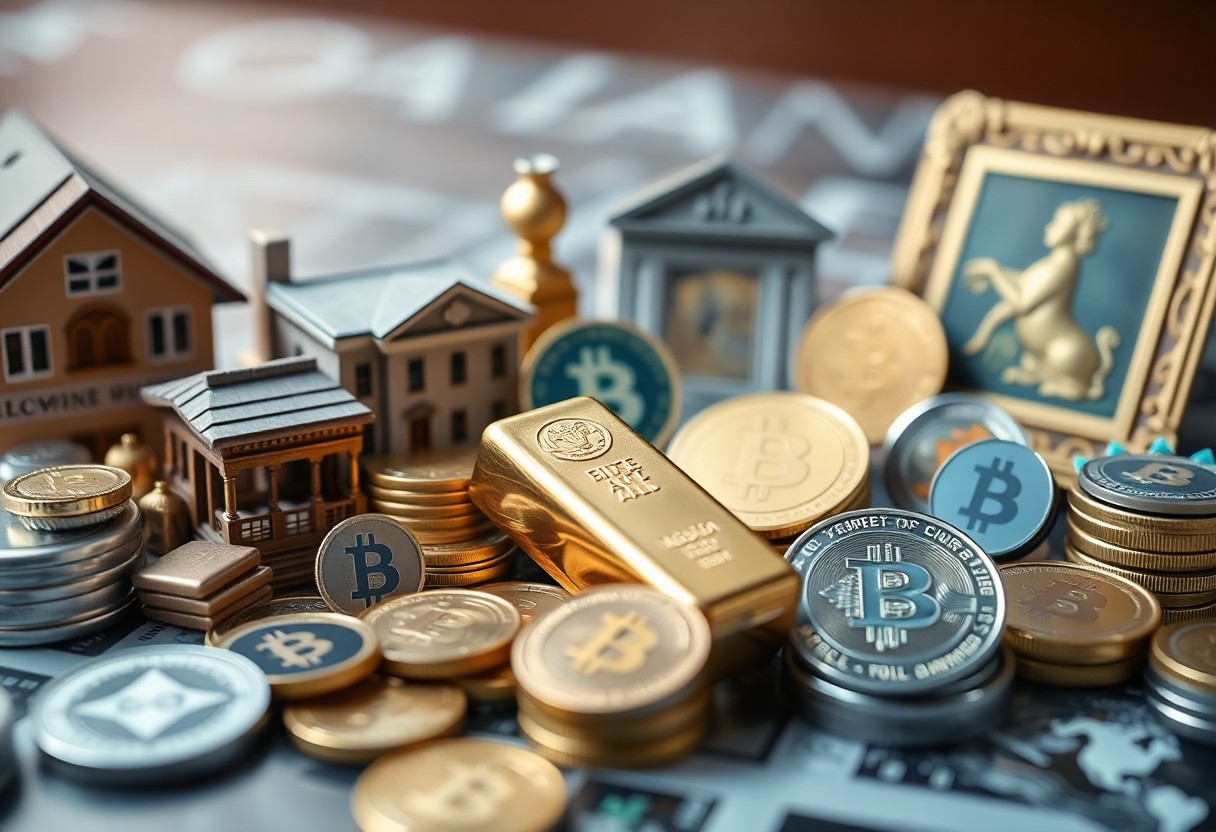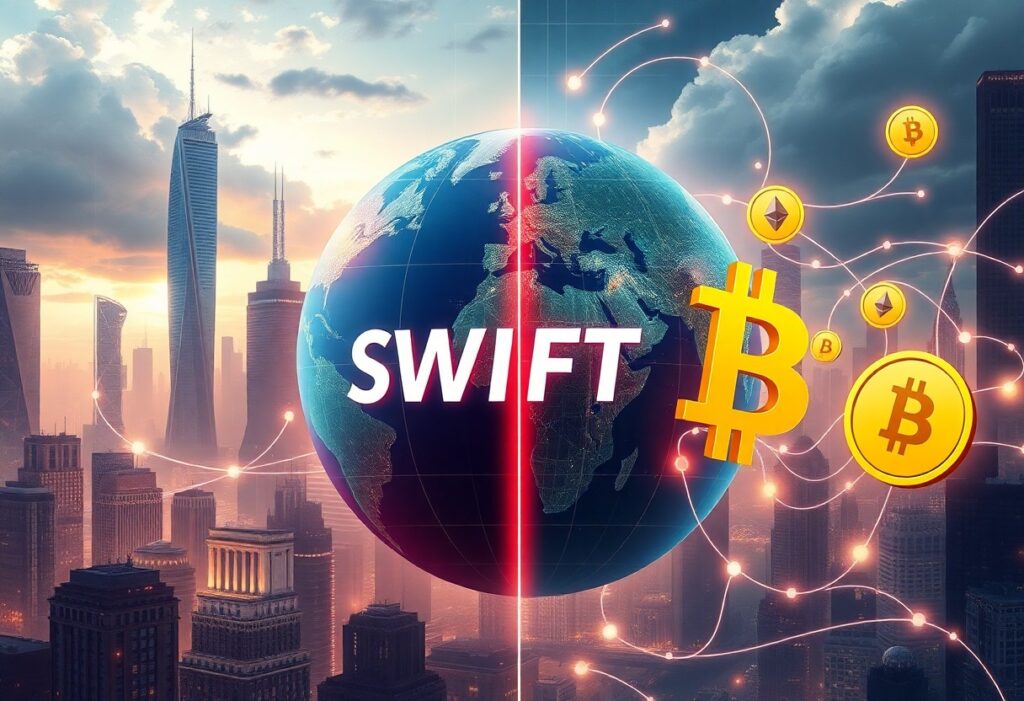Now Reading: Tokenization of Real-World Assets – The Next Big Thing in Crypto Investments
-
01
Tokenization of Real-World Assets – The Next Big Thing in Crypto Investments
Tokenization of Real-World Assets – The Next Big Thing in Crypto Investments

It’s becoming increasingly clear that tokenization of real-world assets is transforming the landscape of crypto investments. By converting tangible assets like real estate, art, and commodities into digital tokens, you can gain access to unprecedented liquidity and fractional ownership. This innovation goes beyond mere speculation, offering the potential for enhanced investment opportunities. However, it also brings risks such as volatility and regulatory uncertainty. To explore how tokenization can revolutionize your investment strategy, check out this insightful post on Real-World Assets (RWA): The Next Big Thing In Blockchain.
Key Takeaways:
- Tokenization enables the fractional ownership of real-world assets, making investments more accessible to a broader audience.
- Blockchain technology enhances transparency and security, fostering trust among investors and facilitating seamless transactions.
- The growing interest in tokenized assets is leading to new regulatory frameworks, paving the way for mainstream adoption in the financial ecosystem.
Understanding Tokenization
The tokenization of real-world assets represents a transformative shift in how you can engage with investments. By converting tangible assets into digital tokens on a blockchain, it enables fractional ownership and broader access, fundamentally changing the investment landscape.
What is Tokenization?
Among the many innovations in the financial technology landscape, tokenization stands out as a method for transforming tangible assets into digital equivalents. This process allows assets like real estate, art, and equities to be divided into smaller, tradeable parts, thus making them more accessible to a wider range of investors.
How Tokenization Works
Works by representing an asset’s ownership digitally, typically on a blockchain. Each token serves as a record of ownership, and through smart contracts, these tokens can define the rights and responsibilities associated with the asset, streamlining processes such as buying and selling.
Further, the underlying blockchain technology ensures that transactions are secure, verifiable, and immutable. Tokenization allows for the seamless transfer of assets, which can enhance liquidity and decrease transaction costs. The decentralized nature of the blockchain reduces the need for intermediaries, enabling faster and more efficient transactions.
Types of Real-World Assets That Can Be Tokenized
Below are examples of real-world assets that can be effectively tokenized:
| Real Estate | Fractional ownership through tokens enabling easier entry for investors. |
| Art | Tokenizing artwork allows for shared ownership with clearer provenance. |
| Commodities | Gold and other commodities can be represented as tokens, enhancing liquidity. |
| Equity | Tokenizing company shares can simplify issuance and trading. |
| Intellectual Property | Allows creators to tokenize and monetize their work directly. |
Knowing how various assets can be tokenized opens up significant investment opportunities for you. With a diverse range of options, you can find specific investments that align with your portfolio goals.
What makes these assets appealing is not only the ability to own fractions but also the enhanced liquidity and reduced barriers to entry for you as an investor. Moreover, the transparency and security provided by blockchain technology ensure that your investments are safeguarded against fraud and mismanagement. You can now diversify your investment strategy significantly with tokenized real-world assets.
- Increased Liquidity
- Fractional Ownership
- Accessibility
- Reduced Transaction Costs
- Secure Transactions
Benefits of Tokenizing Real-World Assets
Some key benefits of tokenizing real-world assets include enhanced liquidity, the ability for fractional ownership, and increased transparency and security. By transforming physical assets into digital tokens, you gain access to a broader market, enabling more seamless trading, while also opening up investment opportunities that were previously restricted to wealthier individuals. This revolutionary shift could potentially reshape the investment landscape.
Increased Liquidity
Among the standout advantages of tokenizing real-world assets is the significant boost in liquidity. By converting tangible assets into tradeable digital tokens, you can buy, sell, or trade your investments quickly and easily, thereby attracting a wider range of investors. The democratization of assets enables you to exit positions more efficiently, reducing the traditional delays associated with liquidating physical assets.
Fractional Ownership
Assets can be divided into smaller units, allowing you to own a fraction of a high-value item, such as real estate or art. This fractional ownership model not only lowers the barrier for entry into high-end investments but also diversifies your portfolio effectively. By investing in fractions of various assets, you can manage risk while benefiting from potential appreciation in value.
In addition, this model allows you to tailor your investments according to your financial strategy and risk tolerance. With fractional ownership, you can spread your funds across multiple assets, minimizing potential losses in a challenging market. This flexibility creates opportunities for you to generate returns from diverse sectors without the need for a substantial upfront capital investment.
Transparency and Security
Before delving into investments, you must consider the transparency and security that tokenization offers. Utilizing blockchain technology ensures that all transactions are recorded in an immutable ledger, providing you with a clear and verifiable ownership history. This transparency significantly mitigates the risks associated with fraud and misrepresentation, crucial factors in today’s investment climate.
It also gives you peace of mind knowing that your investments are protected. With built-in security protocols, blockchain technology guards against unauthorized access or manipulation of your asset records. This enhanced security is vital, particularly as the market becomes increasingly digital, ensuring that your investments remain safe and trustworthy. Understanding these aspects will empower you to make informed and confident investment decisions.
Regulatory and Legal Considerations
For the tokenization of real-world assets to gain traction in the crypto investment space, it is crucial to navigate the complex regulatory landscape that governs this area. As you explore How tokenization is transforming finance and investment, be aware that strong legal frameworks are necessary to ensure compliance and investor protection.
Current Regulatory Landscape
One aspect of the current regulatory landscape involves various jurisdictions adopting different approaches to tokenization. Some countries are creating comprehensive frameworks, while others lag behind, resulting in a patchwork of rules that can complicate your investment decisions.
Compliance Challenges
By entering the tokenization market, you may face several compliance challenges, including understanding varying regulations, meeting reporting requirements, and ensuring transparent transactions. These complexities can pose hurdles for both emerging projects and seasoned investors seeking to get involved.
Legal experts highlight that the absence of universally accepted standards for tokenized assets often complicates compliance. Furthermore, you may encounter issues related to asset classification, which can affect how tokens are treated under local laws. This ambiguity necessitates thorough due diligence and legal consultation to mitigate risks associated with regulatory scrutiny.
Future Outlook for Regulations
Across the globe, regulators are recognizing the need to develop frameworks that support tokenization while ensuring investor protection and market stability. As a potential investor, you should keep an eye on these evolving regulations, as they will significantly shape the future of your investments in tokenized assets.
Indeed, the shift towards more structured regulatory environments is expected to foster greater trust and legitimacy in tokenization, paving the way for more substantial participation in this innovative market. As regulations evolve, you may find new opportunities to invest in tokenized assets while benefiting from enhanced legal clarity and protection.
Technological Infrastructure for Tokenization
Once again, the advancements in technology are paving the way for the tokenization of real-world assets. The foundation of this innovative approach lies in robust technological infrastructure that ensures seamless transactions, scalability, and efficiency. You will find that the integration of blockchain technology, coupled with smart contracts, plays a vital role in creating an ecosystem that supports the secure management of digital assets, making it easier than ever to participate in crypto investments.
Blockchain and Smart Contracts
For tokenization to thrive, the underpinning technologies must be both efficient and secure. Blockchain serves as the backbone for tracking ownership and executing transactions, while smart contracts automate processes, ensuring transparency and trust. You can leverage these features to enhance your investment strategies, as they offer a level of security and automation previously unattainable in traditional finance.
Security and Risk Management
Technological advancements come with inherent vulnerabilities. As you engage in tokenization, understanding the importance of security and effective risk management is necessary. Robust measures are necessary to protect your investments against potential losses due to cyber-attacks or system failures. By implementing multi-layered security protocols, you can assert greater control over your digital assets.
Risk management in tokenization involves recognizing possible threats and establishing clear protocols to mitigate them. You should assess weaknesses in your framework, develop response strategies, and continuously monitor your systems for any suspicious activity. Strengthening your security measures not only protects your investments but also fosters greater confidence in this evolving market.
Interoperability Between Platforms
Above all, interoperability between platforms facilitates seamless experiences in the tokenized space. When different systems communicate effectively, you can easily transfer and manage your assets across various platforms, further amplifying your investment opportunities. Ensuring interoperability allows you to navigate the tokenization landscape with greater ease and flexibility.
Further enhancing your investment prospects, interoperability breaks down the silos often found in traditional financial systems. By enabling cross-platform interactions, you maximize the value of your tokenized assets and expand your reach in the market. This interconnectedness ultimately leads to a more diverse and accessible investment landscape, empowering you to take full advantage of the tokenization revolution.
Investment Opportunities and Market Growth
Your interest in tokenized assets opens up a world of investment opportunities. As the market continues to grow, you have the chance to diversify your portfolio by investing in real-world assets like real estate, art, and commodities, all represented in digital form. This innovation not only enhances liquidity but also broadens accessibility for investors, making it an enticing prospect for attracting a broader audience.
Emerging Trends in Tokenized Assets
On the horizon, you can observe a surge in emerging trends within tokenized assets. These trends include the rise of fractional ownership, enabling you to invest in expensive items for a fraction of the cost. Additionally, the integration of DeFi protocols with tokenized assets presents enhanced liquidity options, empowering you to participate in active trading while maintaining an interest in tangible assets.
Institutional Adoption
Against the backdrop of a rapidly evolving market, traditional institutions are increasingly embracing tokenization. Your confidence in the industry grows as banks and asset managers explore ways to incorporate tokenized assets into their portfolios, thereby legitimizing the technology and enhancing its acceptance among mainstream investors.
At the forefront of this shift, major financial institutions recognize the potential of tokenization to revolutionize investment strategies. By leveraging blockchain technology, they can offer new products and streamline processes, making investments in real-world assets more efficient. As this adoption continues, you stand to benefit from the increased liquidity and transparency that institutional involvement brings, ensuring a more robust marketplace for tokenized assets.
Potential Risks for Investors
At the same time, you should be aware of the potential risks associated with tokenized investments. Factors such as market volatility, regulatory uncertainties, and lack of established valuation metrics can impact your returns, making it important to conduct thorough research before diving in.
Investors should remain vigilant as tokenized assets are not without their challenges. Regulatory frameworks are still developing, which could expose you to unexpected legal complications. Additionally, the market’s volatility may result in fluctuations that can significantly impact the value of your investments. Understanding these risks and adopting a cautious approach will help you navigate the landscape of tokenized assets more effectively.
Key Challenges and Roadblocks
All innovations come with their own set of challenges, and the tokenization of real-world assets is no exception. You may encounter hurdles that can hinder its widespread adoption, including issues related to scalability, market acceptance, and security concerns. Addressing these challenges is crucial for the future success of tokenized investments.
Scalability Issues
Challenges arise when attempting to scale the infrastructure necessary for tokenization. As demand grows, the existing blockchain networks may struggle to handle high transaction volumes, leading to increased costs and delays. You need to consider how the technology can adapt and evolve to efficiently support a larger user base and transaction throughput.
Market Acceptance
Below the surface, the success of tokenization heavily relies on market acceptance. Users and traditional investors may be hesitant to embrace this new investment model due to a lack of understanding. Furthermore, regulatory uncertainty can further complicate this acceptance, forcing you to stay informed about evolving guidelines that may influence your investment decisions.
Issues surrounding market acceptance are often tied to a general reluctance to trust new technologies. You should recognize that many potential investors might be cautious because of limited education regarding tokenized assets and their benefits. Additionally, a lack of established standards could lead to hesitance in fully committing to these investments until they are widely verified and recognized.
Security Concerns
Beside scalability and market acceptance, security concerns are paramount in the tokenization of real-world assets. You must be aware that vulnerabilities in smart contracts or blockchain networks can expose your investments to risks. Consequently, ensuring robust security mechanisms is crucial to foster trust in this burgeoning asset class.
Indeed, the landscape of security remains ever-changing, and understanding the implications of breaches or hacks can safeguard your investments. It is important for you to stay informed about recent incidents and review the security measures that platforms claim to implement. Your diligence in assessing this aspect can significantly impact the safety of your tokenized assets in a rapidly evolving market.
Conclusion
Upon reflecting on the tokenization of real-world assets, it becomes evident that this innovative approach offers you a groundbreaking opportunity in crypto investments. By converting physical assets into digital tokens, you gain increased accessibility, liquidity, and diversification in your investment portfolio. As this trend continues to evolve, staying informed and adapting to these changes can substantially enhance your investment strategy, positioning you at the forefront of the future financial landscape.
FAQ
Q: What is tokenization of real-world assets?
A: Tokenization refers to the process of converting ownership rights of real-world assets, such as real estate, art, or commodities, into digital tokens that exist on a blockchain. Each token represents a fraction of the asset, enabling fractional ownership and easier transferability. This process not only enhances liquidity but also allows for a broader range of investors to access high-value assets that were previously difficult or impossible to invest in.
Q: How does tokenization impact the investment landscape?
A: Tokenization is revolutionizing the investment landscape by democratizing access to high-value assets. It allows smaller investors to buy fractions of expensive assets, thereby lowering the barrier to entry for investment. Additionally, the use of blockchain technology enhances transparency and security, as all transactions are recorded on an immutable ledger. This can potentially lead to more efficient market dynamics and increased capital flow into diverse real-world asset classes.
Q: What are the potential risks associated with investing in tokenized real-world assets?
A: While tokenization presents many opportunities, there are also risks to consider. These include regulatory uncertainties, as the legal framework around tokenized assets is still evolving. There may also be risks related to the asset’s underlying value and its management, as well as technological risks associated with blockchain platforms. Investors should conduct thorough due diligence and assess the credibility of any platform offering tokenized assets before making an investment.






















